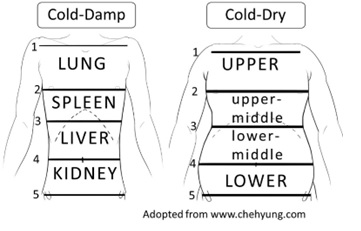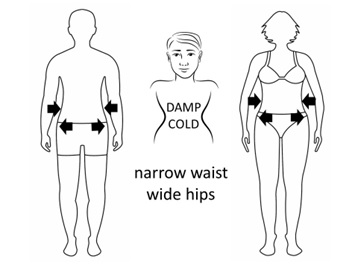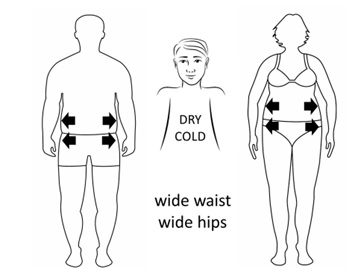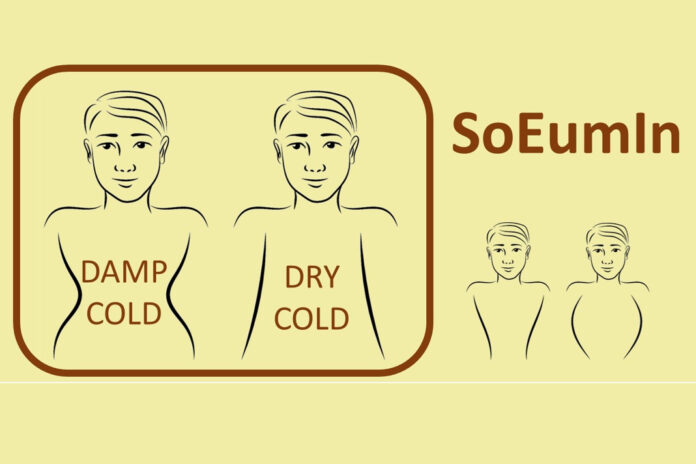There Are Two Sub Types of Soeumin: Cold-Damp and Cold-Dry Types
By David Lee, L.Ac.
Body Shaps of Cold-Damp and Cold-Dry Types

Body Shape of a Cold-Damp Type (Lesser Yin and Greater Yang) and Cold-Dry Type (Lesser Yin and Greater Yin).
The two Soeumins have different torso shapes due to the size variance in the four burners. The lower burner, which houses the Water element, is large. The upper-middle burner, which houses an Earth element, is small. Therefore, the rib cage at the level of intercostal angle is physically narrower than the large pelvic bone at the anterior-superior-iliac spine.
A Cold-Damp constitution has a Greater Yang subtype with a large Metal element and a small Wood element. Consequently, the physical shape of the upper burner of the shoulders is large and wide. The middle-lower burner has a narrow to concave shape waist.
A Cold-Dry constitution, however, has a Greater Yin subtype with a large Wood element and a small Metal element. Consequently, a physical shape of the upper burner of the shoulders is small and narrow. The middle-lower burner has a wide to convex shape of the waist.
Body Shape of a Cold-Damp Body Type:

Muscles and bones: Muscles do not bulk easily, even with exercise. Tends to have average or thinner bones.
Weight gain: Ectomorph to mesomorph. Slim and thin. Extra weight is evenly distributed in the upper and lower body, although the initial gain is in the buttocks.
Abdomen: The lower half of the abdomen, below the belly button, protrudes more than the upper abdomen.
Proportion: The upper and lower body is evenly proportioned, separated by a curved-in waist like an hourglass.
The shoulders are straight, square, and wide. The lower ribcage is narrow and does not flare out. The pelvic bone is wider than the lower ribcage. The feet are narrow and small.
Body Shape of a Cold-Dry Body Type:

Muscles and bones: Stout muscles and strong bones. Muscles are evenly gained in both the upper and lower halves of the body, especially with weight training.
Weight gain: Mesomorph to endomorph. There is more weight in the upper arms, upper and lower legs, abdomen, and buttocks. The first sign of weight gain is in the buttocks and lower half of the body. Their weight tends to fluctuate wildly within a short period of time because they tend to retain and lose water quickly.
The waist tends to protrude outwards in a convex shape. But regular exercise can make the waist concave. The hips are wider than the lower ribcage, and the waist gradually slopes out to the hips in a triangle shape.
Abdomen: The front lower half of the abdomen below the belly button protrudes more than the front upper half. The waist is a convex shape, opposite to the hourglass.
Proportion: The lower half of the body is larger and appears stronger.
Shoulders are rounded and sloped downwards, which is the opposite shape to a square shape. The width of the shoulders is narrower than the hips.
The lower half of the rib cage, which houses liver and spleen organs, flares outward. The pelvic bone is large. The pelvic girdle is wider than the rib cage. The feet are large and wide.

































